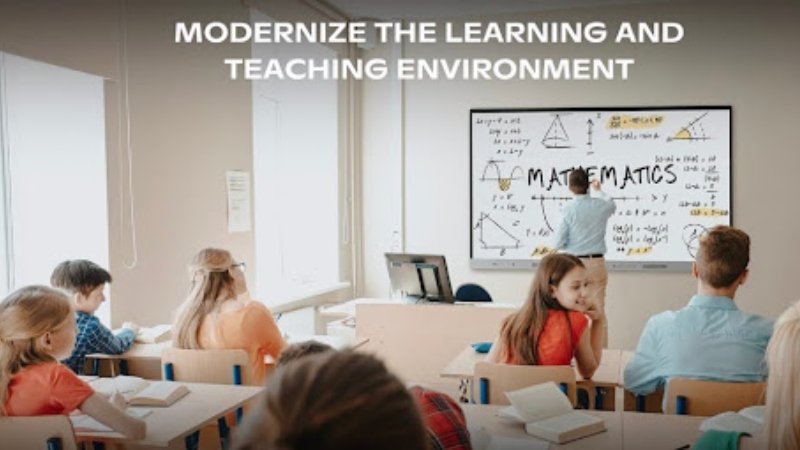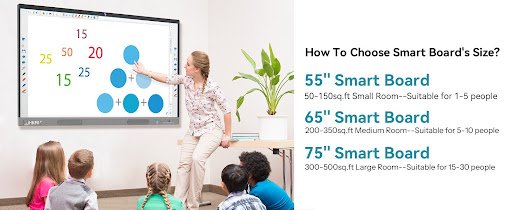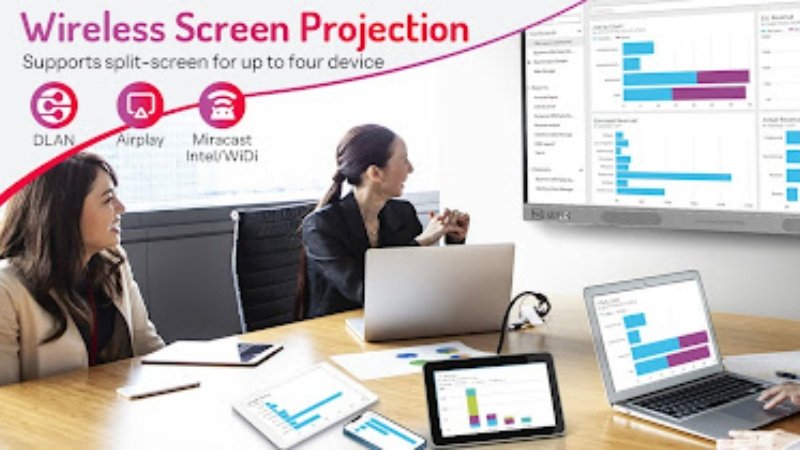Education and business communication have advanced tremendously over the past few decades. Among the innovations driving these changes are interactive displays and whiteboards.
These tools have replaced traditional boards and projectors in many classrooms and offices, creating spaces that encourage collaboration, engagement, and creativity.
Interactive displays and whiteboards are no longer considered luxury items but essential components of modern learning and working environments.
Interactive Displays and Whiteboards
An interactive display is a large touch-enabled screen that allows users to control content directly with their fingers or special pens. It functions similarly to a tablet but on a much larger scale. Users can write, draw, swipe, zoom, and interact with digital content in real time.
Interactive whiteboards, on the other hand, are slightly different in their setup. They are typically connected to a projector and a computer.
The projector displays the content onto the board, and users interact through touch or digital pens. Both tools can save notes, display multimedia, and connect to online resources.
Though the technologies differ slightly, their purpose is the same: to make lessons, presentations, and meetings more engaging and collaborative.
The Rise of Interactive Technology in Education
Traditional teaching methods relied heavily on chalkboards, paper, and textbooks. While effective in their time, these tools often limited interaction. Students would listen to lectures, take notes, and complete exercises on paper.
Today, with the rapid adoption of technology, students are accustomed to interactive digital environments. Bringing similar tools into classrooms ensures that teaching keeps pace with modern expectations.
Interactive displays and whiteboards allow students to engage with content directly. Instead of simply listening, they can participate by solving problems on the board, highlighting key information, or even collaborating on group projects in real time. This hands-on approach makes lessons more memorable and enjoyable.
Benefits of Interactive Displays and Whiteboards in Classrooms
1. Increased Student Engagement
Students become active participants rather than passive listeners. Dragging vocabulary words to match pictures, solving math problems on the board, or labeling diagrams makes learning more interactive.
2. Support for Multiple Learning Styles
Not every student learns in the same way. Visual learners benefit from images and videos, auditory learners from explanations and audio clips, and kinesthetic learners from touching and interacting with the board. Interactive technology caters to all these needs.
3. Access to Multimedia and Online Resources
Teachers can display videos, animations, online articles, and interactive maps. This creates a rich environment where abstract concepts become easier to understand. For example, a history lesson can include maps, documentaries, and primary documents shown directly on the board. Learn More
4. Improved Collaboration
Interactive displays and whiteboards allow students to collaborate easily. Multiple users can write or draw on the board at the same time, encouraging teamwork and communication.
5. Saving and Sharing Lessons
Teachers can save notes and entire lessons, which can then be shared with students for review. Absent students can access materials later, ensuring they do not fall behind.
6. Eco-Friendly Alternative
Interactive boards reduce the need for paper and markers, making them a more sustainable option for schools and organizations.

Applications Across Different Subjects
Language Arts
Students can highlight passages, annotate texts, and listen to audio recordings of stories. Teachers can encourage group reading or interactive spelling exercises.
Mathematics
Complex equations can be solved step by step while graphs and charts are generated instantly. Geometry lessons can include visual models that students manipulate directly on the board.
Science
From virtual dissections to interactive chemical reactions, science comes alive with multimedia and simulations. Students can visualize processes that would otherwise be difficult to demonstrate.
Social Studies and History
Maps, timelines, and primary sources can be displayed. Interactive quizzes and group discussions can reinforce key historical events.
Art and Creativity
Students can draw, paint, and design directly on the board. This opens up opportunities to practice digital art techniques while learning traditional concepts.
Interactive Displays and Whiteboards in Business
While classrooms are a natural setting for interactive technology, businesses also benefit greatly. In meeting rooms, these boards replace projectors and static presentations. Teams can brainstorm ideas, annotate documents, and develop strategies in real time.
Collaborative Meetings
Employees can work together on shared documents, mark changes directly on the board, and generate ideas during brainstorming sessions.
Remote Work Support
Interactive boards integrate with video conferencing software. Teams working in different locations can collaborate as though they were in the same room.
Presentations
Instead of static slides, presenters can navigate interactive content, answer questions, and adapt the flow of information based on audience input.
Training and Development
Companies use interactive displays for training programs, allowing employees to participate actively rather than passively receiving information.
The Role of Teachers and Facilitators
While interactive technology is powerful, its success depends on the educators and facilitators who use it. Teachers must design lessons that take advantage of the technology rather than using it as a digital version of a traditional board.
Similarly, business leaders must plan meetings that encourage collaboration rather than one-way presentations.
Professional development is key. Teachers and facilitators need training to integrate technology into their methods effectively. Schools and companies should provide ongoing support to ensure that users are comfortable with the tools.
Overcoming Challenges
Despite the many advantages, there are challenges in adopting interactive displays and whiteboards.
Cost of Equipment
These boards can be expensive. Schools and businesses must budget carefully to ensure long-term value. Some choose phased implementation, starting with a few key rooms.
Maintenance and Technical Support
Like all technology, interactive boards require regular maintenance. Without reliable technical support, classrooms or meetings may experience downtime.
Training Needs
Teachers and employees who are unfamiliar with interactive tools may hesitate to use them fully. Training programs are essential for confidence and effective use.
Distraction Risk
The variety of features available can distract from lesson goals. Clear planning and structured activities keep students and participants focused.
Digital Divide
Not every school or organization has equal access to advanced technology. Ensuring equitable access remains a challenge.
Many institutions are adopting advanced tools such as HKMLC interactive whiteboards to enrich learning environments.
These boards offer clarity, precision, and integration with a wide range of digital resources, making them a valuable example of how modern classrooms can combine interactivity with accessibility.

Final Thoughts
Interactive displays and whiteboards have transformed classrooms and workplaces into collaborative, dynamic spaces. They offer benefits such as improved engagement, support for diverse learning styles, access to multimedia, and the ability to save and share content. Visit Kenn Whitaker for more details.
